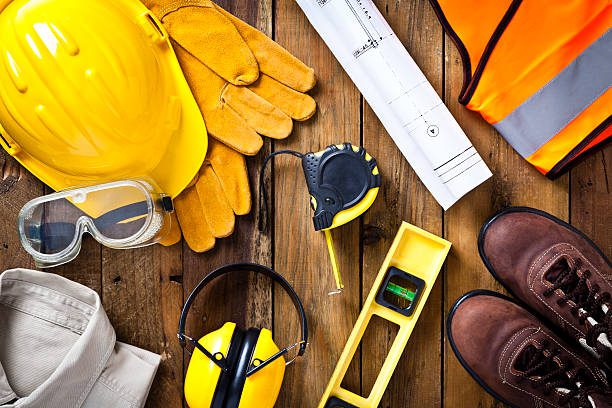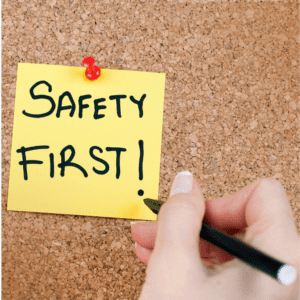Empowering Safety: Women’s PPE for Workplace Wellness

In modern workplaces, ensuring employee safety is a fundamental priority. From construction sites to laboratories, companies invest significantly in protective measures and equipment to minimize risks and safeguard the well-being of their workforce. However, an often overlooked aspect of this safety paradigm is the provision of personal protective equipment (PPE) that adequately fits and protects all employees, particularly women. Despite strides in gender equality and workplace safety protocols, many women continue to face significant challenges due to ill-fitting or inadequate PPE. This oversight not only compromises comfort but also poses serious safety risks, necessitating an urgent call to address and rectify these disparities.
Understanding Women’s Safety in the Workplace
Women’s safety in the workplace encompasses more than just physical protection from hazards. It also includes psychological safety, respect, and equitable opportunities. Inadequate PPE for women, however, represents a significant barrier to achieving true safety and equality. Women in various industries—ranging from healthcare and manufacturing to construction and mining—are often provided with PPE designed primarily with male body dimensions in mind. This lack of consideration for the diverse physical characteristics of women can lead to increased risk of injury and discomfort, ultimately affecting their ability to perform tasks efficiently and safely.
Unveiling the Disparities
The issue of inadequate PPE for women is multifaceted. Many women find that standard-issue PPE does not fit properly, which can reduce its effectiveness and even pose additional risks. For example, gloves that are too large can impair dexterity, leading to accidents. Similarly, oversized safety vests can hinder movement, making it difficult for women to navigate their work environment safely. Respiratory protective equipment, such as masks and respirators, often fails to fit women properly, which can be particularly hazardous in environments with airborne contaminants.
These disparities highlight a critical oversight in workplace safety practices: the assumption that one-size-fits-all solutions are adequate. This assumption neglects the physiological differences between men and women, such as average hand size, body shape, and overall physical build. The consequences of this oversight extend beyond physical discomfort and inconvenience, impacting the overall safety and well-being of female employees.
Understanding the Challenges
Several factors contribute to the persistent inadequacy of PPE for women. Historically, many industries, especially those in the manual labor sectors, have been male-dominated. This demographic skew has led to a default focus on designing and procuring PPE that caters primarily to male body types. Additionally, the variability in women’s body sizes and shapes adds complexity to the design and production of PPE that fits well and functions effectively.
Cultural stereotypes and unconscious biases also play a role. There is a pervasive, albeit often unspoken, notion that standard PPE should be sufficient for everyone, disregarding the specific needs of women. This mindset not only marginalizes female workers but also perpetuates a culture of inequality and inadequate safety provision. The reluctance or oversight in providing appropriately sized and designed PPE for women reflects a broader issue of gender bias in workplace safety and health considerations.
Addressing the Concerns
To create a safer and more equitable work environment, it is crucial to prioritize inclusivity in the design and procurement of PPE. One of the most effective ways to address this issue is by developing and offering PPE that is specifically tailored to fit the anatomical and physiological characteristics of women. This includes designing gloves, helmets, vests, and other protective gear in a range of sizes and shapes that accommodate the diversity of women’s bodies.
Employers should also engage directly with female employees in the process of selecting and testing PPE. This engagement ensures that the equipment meets their needs and provides adequate protection without sacrificing comfort or functionality. Furthermore, raising awareness about the importance of gender-specific PPE is essential. Training programs and educational initiatives can help dispel myths and misconceptions about the necessity of specialized PPE for women, fostering a more inclusive safety culture.
Regulatory bodies and industry standards organizations also have a vital role to play. By setting guidelines that explicitly include provisions for gender-specific PPE, they can encourage manufacturers to innovate and expand their product lines to cater to the needs of all workers. This regulatory support can help drive a market demand for better-fitting PPE, ultimately benefiting workers and employers alike.
A Call to Action
The journey toward achieving gender-inclusive workplace safety is a shared responsibility. Employers, manufacturers, regulators, and advocacy groups must work together to ensure that all workers, regardless of gender, have access to PPE that fits properly and provides adequate protection. This effort is not just about compliance with safety standards but about fostering an inclusive workplace culture where every employee feels valued and protected.
Investing in proper PPE for women is an investment in the overall well-being of the workforce. It reduces the risk of injuries, enhances job satisfaction, and can even improve productivity. Furthermore, by addressing these disparities, companies can demonstrate a commitment to equality and inclusivity, which can enhance their reputation and attract a more diverse and talented workforce.
In conclusion, the issue of inadequate PPE for women in the workplace is a significant barrier to achieving true safety and equality. By prioritizing the design and provision of gender-specific PPE, raising awareness, and implementing inclusive policies, we can create a safer and more equitable work environment for all. This effort requires a collective commitment to change and innovation, ensuring that all workers, regardless of gender, can perform their duties safely and effectively.











